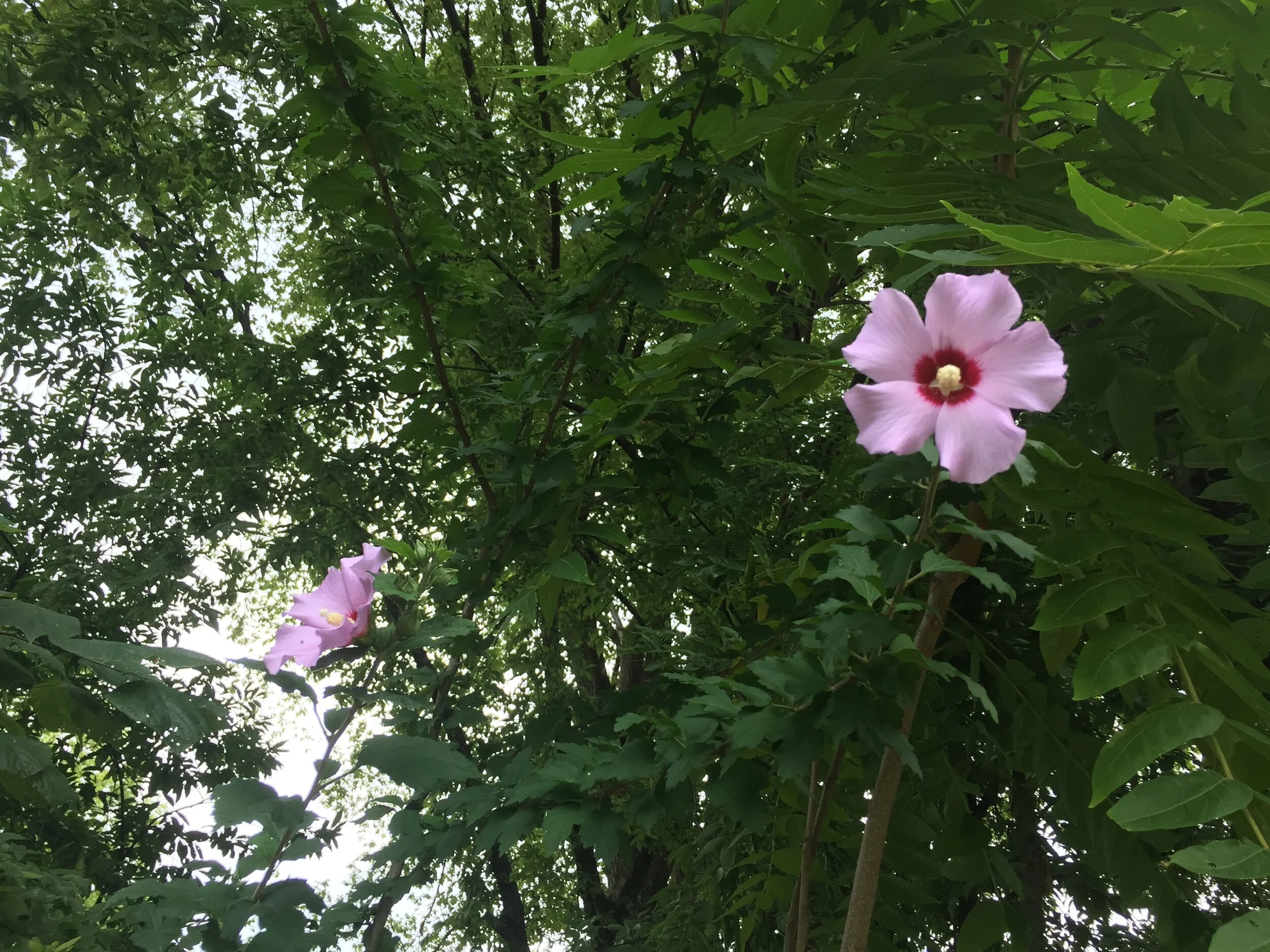The summer blooming Rose of Sharon, or Althea, is a hardy shrub found in many spots along the trail. Its soft lavender to purple blooms open in the day time and close at night, a natural behavior called nyctinasty. The behavior is believed to preserve the flower aroma and help to keep pollen dry, both of which help in the plant’s reproduction.
This multi-stemmed shrub appears along the trail in sunny to shady spots with exceptional examples just west of the Lick Creek Bridge.
The name Rose of Sharon has been commonly given to the plant in reference to its usage in the Hebrew and King James Bible. Scholars believe that the “rose of Sharon” mentioned in the texts are actually a crocus or lily. It is even more confusing as its latin name Hibiscus syriacus would indicate it originates in Syria but it does not. It is of southeast Asian origin, most likely in China or Korea.
Hibiscus syriacus is the national flower of South Korea.
The name Althea or Shrub Althea is the genus name from the old Greek or Latin name for mallow.
Where to find this plant
Sunny or shady spots along the trail, the one above is located just west of the Lick Creek Bridge.
The V&E Greenline counts on individuals like you to help keep the trail clean, safe, and enjoyable for everyone. Please join our community of supporters who play an essential role in caring for all of our essential trees, plants, and features along the trail.
Information provided by the Missouri Botanic Garden, Connie Shepherd, and David Creagh


